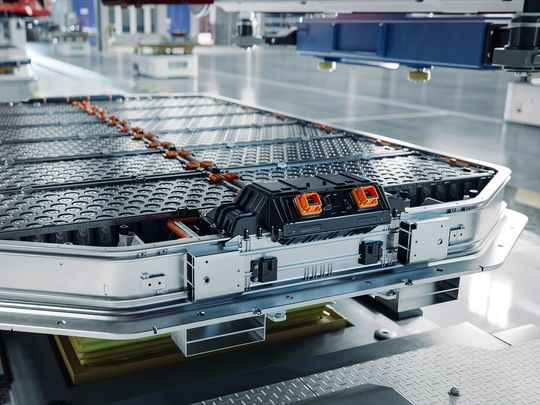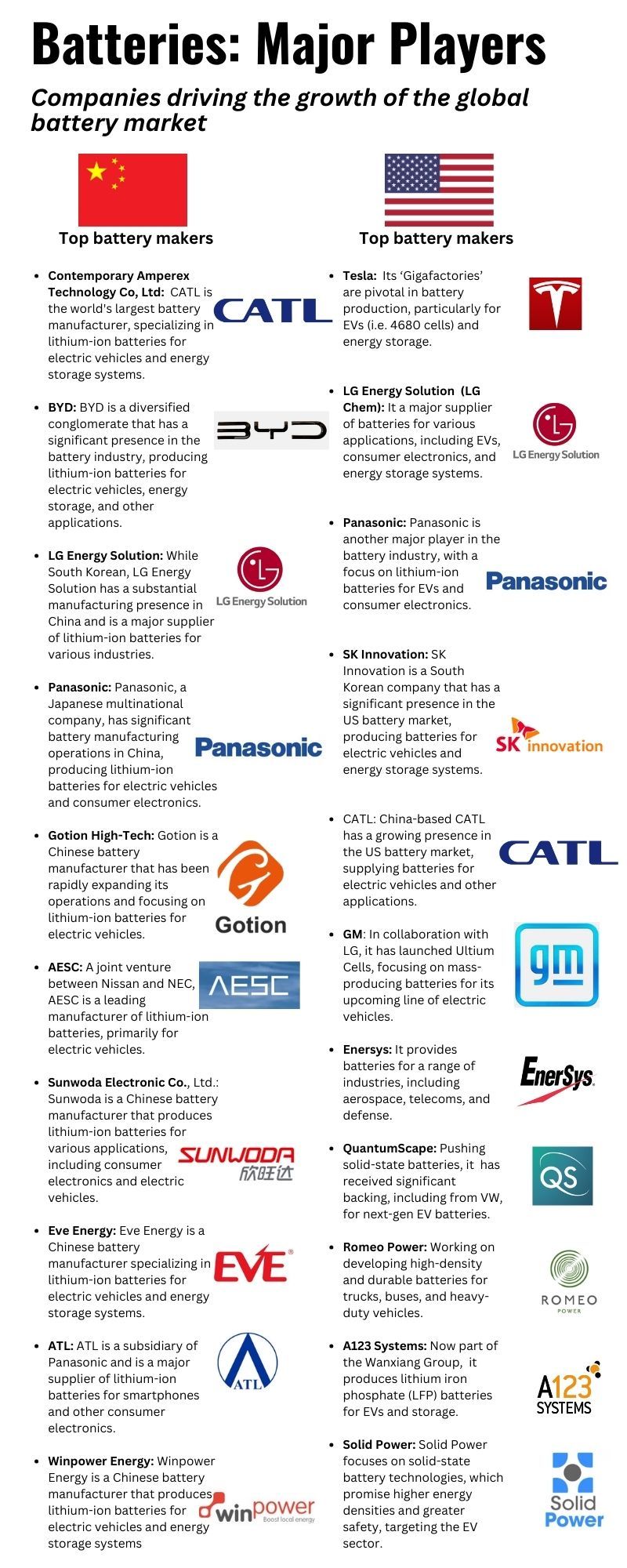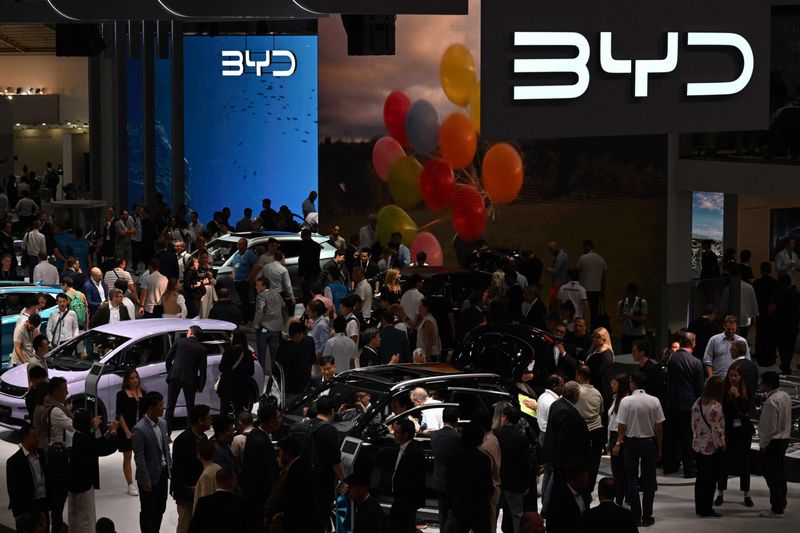Global battery race: 800% surge in production, 90% drop in price, know the leaders and laggards
Multi-billion quest for the best battery technology is key to a renewable future

The future of electric vehicles (EVs) and VTOL air taxis hinges on one thing: batteries.
It's a battle fought on both economic and technical fronts, with the greatest challenge being to achieve the highest energy density, fastest charging, longest cycle life, best safety features, and lowest cost.
Amid a ferocious battery price war, this high-stakes race is a complex, decades-long balancing act, involving multiple technologies and global players.
800 %
jump in global battery production from 2022 to 2027 (Source: Bloomberg)China’s dominance
Currently, six of the top 10 battery manufacturing companies are headquartered in China, according to a BloombergNEF report.
The race for battery supremacy is not limited to a single region. Companies and governments around the world are investing heavily in battery research and development. Besides China, the United States, Japan, and South Korea are among the leading players in this field.
Yet, in terms of production capacity, China’s dominance based on current technologies (lithium-ion, lithium iron phosphate, nickel metal hydride) will remain unassailable beyond 2030, the report added.
Global competition
S battery production capacity is projected to grow 10x in 5 years from 2022.
By 2027, when the world battery production jumps to 8,945 gigawatt hours (GWh), from 1,163 GWh in 2022 — a nearly 800-per cent jump — Bloomberg expects China to further cement its dominance.
8,945 GWh
World battery production by 2027 (Source: Bloomberg)The mainland will account for 69 per cent (or 6,197 GWh) of the global battery production, by 2027.
And despite the expected 10x growth of the US battery production capacity by then, America (with 908 GWh battery production capacity expected by 2027) it will account for only up 10 per cent of the global production.

Germany, the erstwhile automotive powerhouse, will get just 6 per cent at 502 GWh. Hungary (195 GWh), Sweden (135 GWh) and Poland (112 GWh) will each account for between 1 to 2 per cent; the rest of the world will share the crumbs.
How did this come about?
China’s edge is due in part to its policy that encourages domestic ultra-competition among producers. A big part of it is policy push – which has led to its dominance in cathode, anode, and refined battery materials production.
By 2030, China’s leadership in batteries (thanks to CATL and BYD, with a combined market cap of $214 billion as of Friday, September 13, 2024), with nearly 70 per cent of the global production, will remain, according to a Benchmark Mineral Intelligence estimate.
Energy storage is a major game-changer, right alongside AI, blockchain, DNA sequencing, and robotics. But remember, market forces can change everything, just like they did with phones and electricity.
The competition in the battery market is fierce. The US government recently reported that EV battery prices have dropped by a whopping 90 per cent in just 15 years.
Has complacency over this strategic industry, in the West as a whole, slowly but surely eroded its position, leaving it vulnerable to the relentless rise of global competitors?
Government support
Sheer market forces don't hack it anymore. Policy initiatives play a crucial role in driving the renewable lifestyle through research funding, incentives.
Why? With each new technology, new rules and standards are needed.
For EVs, in order to reduce "range anxiety", it would entail faster charging stations and denser charging networks. And just as the invention of the automobile, particularly Karl Benz's 1886 motor car, marked the beginning of ICE (internal combustion engine) technology overtaking horse-drawn carriages, better batteries are inevitably disrupting ICE in out time.
However, this also raises safety concerns, as high-density batteries – particularly lithium-ion batteries – can become volatile when they malfunction. With increased use, fire risks associated with Li-ion also draw more attention.
Safety: Li-ion batteries typically use liquid electrolytes, which can be flammable. Despite modern safety features, these come at the cost of increased weight or size.
Alternatives: Alternatives such as lithium iron phosphate (LiFePO4 or LFP), and solid-state batteries promise improved safety with non-flammable electrolytes. Research is exploring new battery chemistries like lithium-sulfur, solid-state batteries, graphene which offer the potential for greater safety and higher energy density.
Battery chemistry
Sodium-ion and lithium sulfur batteries hold some promise. Their emergence could unlock the door to more affordable electric vehicles while reducing reliance on scarce, expensive and unsustainably mined raw materials.

A number of startups are betting on widely available raw materials — sodium chloride and sulfur — to bring down battery costs. But neither is likely to make it into volume production before 2025. Graphene, for its part, is in early-stage development.
Experts like Shirley Meng, chief scientist at the US Argonne National Laboratory's Collaborative Center for Energy Storage Science, say diversifying battery materials is critical "to keep the cost low and the supply secure."
Key elements of each chemistry
Sodium-ion batteries
Sodium ion batteries do not need lithium, cobalt or nickel — the three most expensive battery ingredients — but need more research and testing to increase their energy density.
- Replaces: Lithium
- Supply: Abundant
- Cost: Extremely low
- Environmental Impact: Benign
- Recyclability: High
- Typical Anode Material: Hard carbon
- Upside: High stability, less flammable than lithium ion, easy to refine, uses same manufacturing equipment as lithium ion
- Downside: Low energy density, low cycle life, heavier than lithium ion
Downside: Low energy density, low cycle life, heavier than lithium ion
Lithium sulfur batteries
Lithium sulfur batteries still rely on lithium in smaller quantities, but do not need nickel or cobalt. Sulfur has huge potential because of its capacity to hold a lot of energy, but startups have to overcome the fact that it is also highly corrosive.
- Replaces: Nickel, cobalt
- Supply: Abundant
- Cost: Extremely low
- Environmental Impact: Lower than cells that use nickel and cobalt, but lithium still not sustainably mined and refined
- Recyclability: High
- Typical Anode Material: Lithium metal
- Upside: High energy density, long range, lighter weight than lithium ion, potential for use in electric aircraft
- Downside: Limited cycle life, potential energy loss, electrode corrosion.
Western companies: Too little, too late
The record of Western companies in energy storage is a mixed one.
In the US, at least $138 billion are being invested into new battery and EV manufacturing facilities since the beginning of 2022. Almost $10 billion of that has gone into companies founded by ex-Tesla employees, according to a Fastmarkets report.
This indicates a strong desire in the US to scaling up battery manufacturing, and its overall role in the global clean energy space.
The EU is pushing major initiatives aimed at fostering innovation, sustainability, and global competitiveness in batteries. One key effort is the Strategic Research and Innovation Agenda (SRIA), part of the BATT4EU Partnership, which outlines critical areas for development in the battery sector.
The agenda focuses on creating a "circular, competitive battery value chain", ensuring the affordability of batteries, reducing reliance on imported raw materials, and promoting safe and sustainable designs.
For example, in 2023, the European Commission announced a €3-billion ($3.32 billion) investment through the Innovation Fund to boost battery manufacturing, especially targeting cell production to help position Europe as a leader in next-generation battery technologies, supporting both EVs and battiers.
These funds complement existing EU projects like Horizon Europe, aimed at long-term research and innovation in the battery field.
But is it a case of too little, too late?
Could the factory closures at VW herald more things to come?
Amid the intense competition, Chinese manufacturers like CATL (market cap: $115 billion) and BYD ($99.86 billion) are expanding aggressively. Their scale, experience give them the edge while others are scaling back.
In Canada, amid Toronto's 100-percent tariff wall on Chinese-made EVs, Umicore postponed a C$2.8 billion cathode plant. In contrast, CATL reported increased profits in the second quarter of 2024.
Takeaways:
- The development of advanced battery technology is essential for the widespread adoption of EV and eVTOL planes.
- As universities and manufacturers continue to push the boundaries of battery performance, we can expect to see even more impressive electric vehicles in the future.
- Countries and companies that lead in battery innovation will keep their edge. Advancements in battery technology will be a key driver for the future of the planet.
- Strategic policies that foster innovation, drive down costs, and secure supply chains will be key to accelerating the battery revolution.
- The race for dominance in battery technology will undeniably shape the future of the electric vehicle industry, influencing its trajectory for decades to come.

